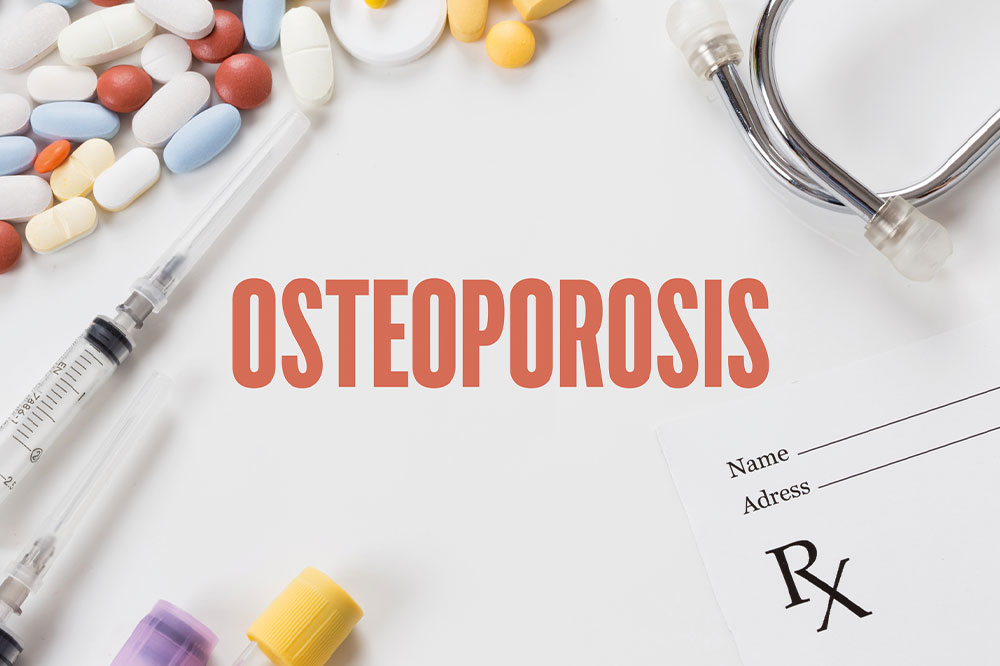
Osteoporosis – Causes, symptoms, and management
Osteoporosis is a health condition characterized by low bone density and increased risk of fractures. It affects millions of people around the world and is more common among postmenopausal women and older adults. While the disorder cannot be cured, treatment and lifestyle changes can help slow its progression, strengthen the bones, and improve the patient’s quality of life. This post explores the common causes, symptoms, and treatment options for osteoporosis.
Causes
Several factors contribute to the development of osteoporosis. However, the primary cause is an imbalance between bone formation and resorption. Some other causes and risk factors for bone density loss include:
Age
Bone density naturally decreases with age, making people more susceptible to osteoporosis.
Menopause
Women, especially those who have attained menopause, are at a higher risk due to decreased estrogen levels. The estrogen hormone is crucial in maintaining bone density.
Hormonal changes
Conditions that cause hormonal imbalances, such as hypothyroidism and hyperthyroidism, can contribute to the disorder’s development.
Nutritional deficiencies
Inadequate calcium and vitamin D intake can increase the risk of osteoporosis, as these are essential nutrients for bone health.
Sedentary lifestyle
A lack of regular exercise and physical activity can weaken the bones and lead to bone loss.
Family history
A family history of osteoporosis or fractures increases the likelihood of developing the condition.
Signs and symptoms
Osteoporosis is often called a “silent disease” because it may not cause noticeable symptoms until a fracture occurs. However, individuals may manifest subtle indications, such as:
Loss of height
Osteoporosis can cause a gradual loss of height over time due to compression fractures in the spine.
Fractures
Individuals with osteoporosis are at an increased risk of fractures, particularly in the spine, hip, wrist, and other weight-bearing bones. These fractures may occur with minimal trauma or even from routine activities.
Back pain
Compression fractures in the spine can cause chronic back pain, which may worsen with movement or prolonged periods of sitting or standing.
Poor posture
Osteoporosis-related fractures can lead to a stooped or hunched posture, known as kyphosis or a Dowager’s hump.
Treatment and management
Treatment aims to slow down bone loss, improve bone density, and reduce the risk of fractures. Some standard treatment options include:
Lifestyle modifications
Adopting a healthy lifestyle is crucial in managing osteoporosis. Following a calcium-rich food plan, maintaining adequate vitamin D levels, and engaging in resistance exercises can help.
Fall prevention
Preventing falls is essential in reducing the risk of fractures. Removing tripping hazards at home, improving lighting, using assistive devices, and going for regular eye check-ups can help minimize the risk of falls.
Physical therapy
Physical therapy can help improve balance, strength, and posture, reducing the risk of falls and fractures.
Understanding the causes and symptoms of osteoporosis and seeking timely diagnosis and treatment are vital for managing the condition. By adopting a healthy lifestyle, using the right treatments, and practicing fall prevention strategies, patients can reduce their risk of fractures and maintain better bone health. One should consult a healthcare professional for an accurate diagnosis and individualized treatment recommendations for osteoporosis or other health conditions.




